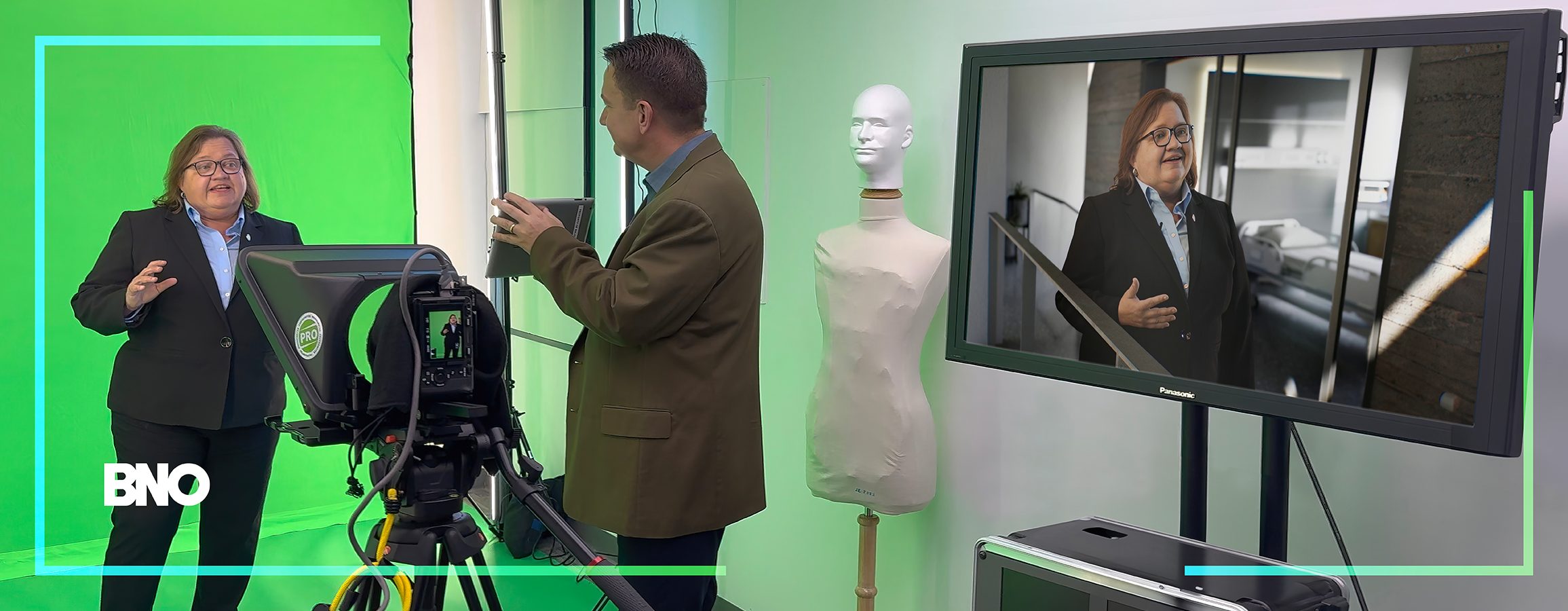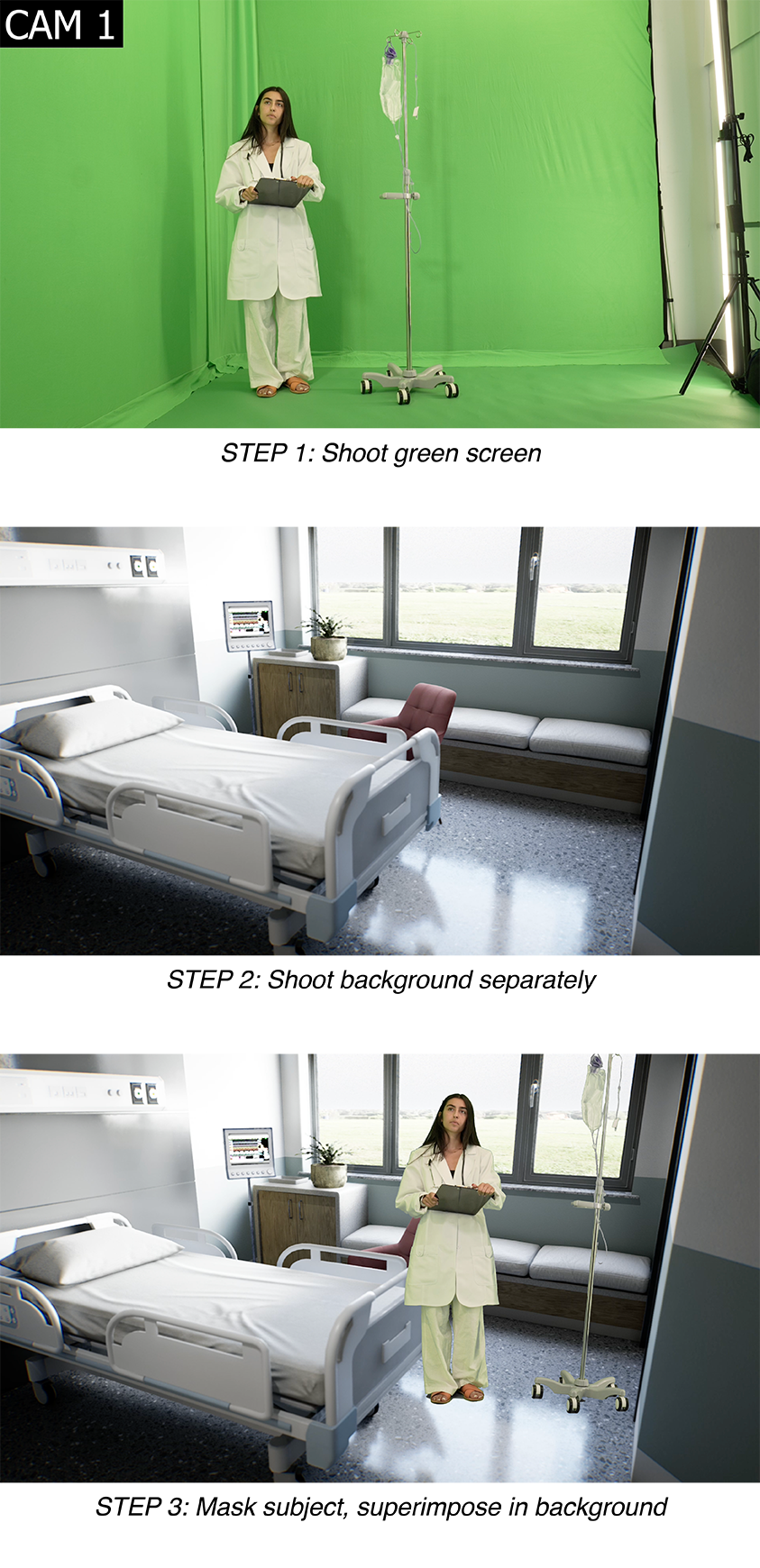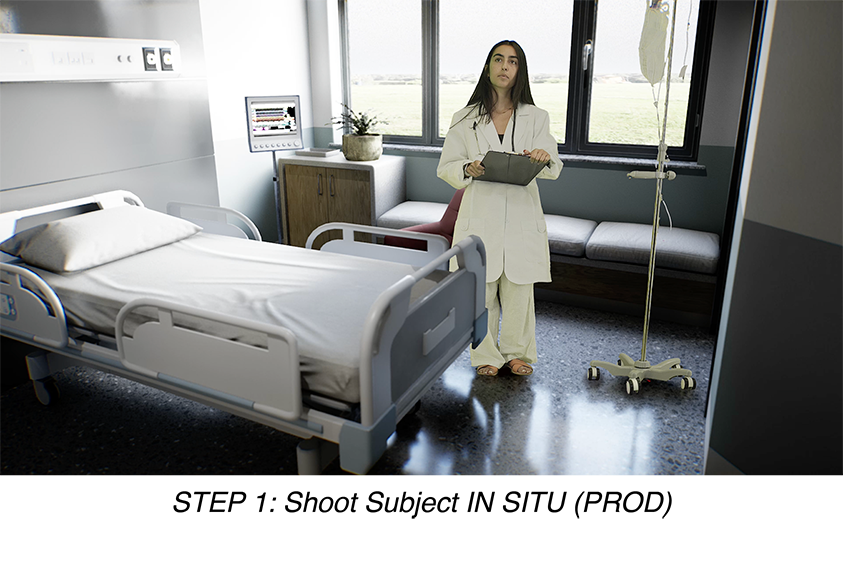Innovate
The Virtual Studio—Coming to a Galaxy Near You

Storytelling without limits
With groundbreaking streaming TV series like The Mandalorian gaining popularity, we’ve learned a few lessons from the Hollywood heavy hitters on how to create great video at scale. Taking a page from their script, we are announcing the launch of the BNO virtual studio VS1. Virtual studio technology expands the universe of storytelling possibility and gives every brand, large or small, the opportunity to make more magic for the money.
High demand drives innovation
Gone are the days when brands spent a fortune creating just a few epic videos or TV ads per year, deploying those same assets across every channel with creative cutdowns and refreshed copy. As competition increased, the digital video ecosystem blossomed, digital video ad spend eclipsed traditional TV advertising, and many brands added inexpensive and easy to produce user-generated videos, talking head testimonials, and 2D explainers to their video content mix. Today, these tactics still play an important role in the sales funnel, but they’re not enough. According to the Interactive Advertising Bureau (IAB) 2024 Digital Video Ad Spend & Strategy Report released in April, digital video ad spend is growing nearly 80% faster than media overall. Forbes listed video marketing among its “trends that will dominate” in 2024.
Bottom line: Brands are seeking more high-quality, customer-relevant, targeted video marketing to help them win, engage, and keep customers. Virtual studios can make that a reality (pun intended) for brands at all budget levels.
Lights, camera, interaction
So, what is it? Is it green screen … LED volumes … 3D environments? The answer is, yes, it’s all these things—and when used in combination with live actors and practical elements, it can become a seamlessly immersive experience for the viewer.
Born from a marriage of 3D gaming VR and cinematography, virtual production borrows from both mediums to create something entirely new. By using a render engine from the video gaming world, such as Unreal Engine, we can create and interact with hyperrealistic virtual scenes that blur the lines between digital render and reality. These scenes are then previewed in real time during production, allowing you to see a close representation of the end product as you go. Creating virtual enviroments can also eliminate the need to build elaborate sets, travel to remote locations, and often both.
Take a look behind the curtain
Probably the best way to help explain the benefits of this technology is through a comparison between traditional green screen and virtual studio productions.
Traditional green screen: When shooting against a traditional green screen, the actor/subject is essentially an object silhouetted against a clean slate, and a new background element will be introduced during the postproduction workflow. Great care is taken to make sure the lighting is consistent, and any foreground objects, shadows, or reflections need to be digitally (and manually) integrated into the background for the scene to appear believable. A downside to this method is that the actors never benefit from seeing or reacting to the background during the shoot. Cue the 100-foot tidal wave!


Virtual studio: In a virtual production, actors are added directly to a virtual, interactive environment. Cameras are programmed to track the subjects and the background. Studio lighting is synchronized, creating realistic shadows, object occlusion, reflective surfaces, and transparency that would have traditionally been added in post production at much greater expense and effort with results that are much less realistic. The concept of “fixing it in post” is now a thing of the past.


Leveling up your production
Green screens are the starting point with virtual production. When upgrading to higher-end LED panel volumes, virtual environments are displayed around the actors for even more authentic performances and more natural lighting. To achieve Mandalorian-level productions: This is the way. Need your studio to accommodate a small army of actors? Larger, well-equipped virtual studios are popping up all around the world. Now you can plan preproduction in a smaller virtual environment, copy it to a portable drive, and march your entire production to a larger studio for shooting.
3 game changers of virtual production
If you’re weighing the benefits of going virtual, first consider the following:
1. Enhanced creative flexibility
- Unlimited locations: Filmmakers can create scenes and film in any location imaginable, from fantastical worlds to more practical historical, corporate, or clinical settings, without the limitations imposed by real-world locations. With virtual production, filming in dramatically different settings in a single day is now a reality.
- Instant modifications and previews: Changes to sets, lighting, and backgrounds can be made in real time, allowing for quick adjustments and experimentation during the production process. For creatives, previewing your vision in real time can validate an approach instantly before spending major investments in postproduction.
- Seamless integration of effects: Visual effects can be integrated into scenes as they are being filmed, providing a more cohesive and visually consistent end product.
2. Cost efficiency
- Reduced set construction costs: Virtual production eliminates the need for building physical sets, which can be expensive and time-consuming. Digital environments can be created and modified at a fraction of the cost.
- Lower travel and location expenses: Filming in virtual environments means that location shoots, which often involve significant travel and accommodation expenses for cast and crew, location rentals, and permit fees, can be minimized or avoided entirely.
- Efficient resource management: Virtual production allows for the reuse of digital assets across multiple projects, further reducing costs.
3. Improved efficiency and safety
- Streamlined production schedule: Virtual production can significantly shorten timelines by allowing multiple stages of production to occur simultaneously.
- Enhanced environmental control: Weather, lighting, and other environmental factors can be precisely controlled in virtual environments, reducing the risk of delays and ensuring consistent shooting conditions.
- Safer conditions: Virtual production can minimize the need for dangerous stunts or challenging location shoots, creating a safer working environment for cast and crew.
This is no undertaking for the timid. It takes mastery of a complex tech stack by experienced video directors and programmers with a common vision. We’ve made the investments and done the homework. As we prepare to launch our virtual production studio, we’re proud to be one of the few full-service agencies to offer this capability to clients and are excited by the great potential for brand storytelling that lies ahead.
In the words of Dr. Emmett Brown in Back to the Future: Where we’re going, we don’t need roads. Buckle up!
If you’d like us to help you navigate the world of possibilities with virtual video production, reach out today!



